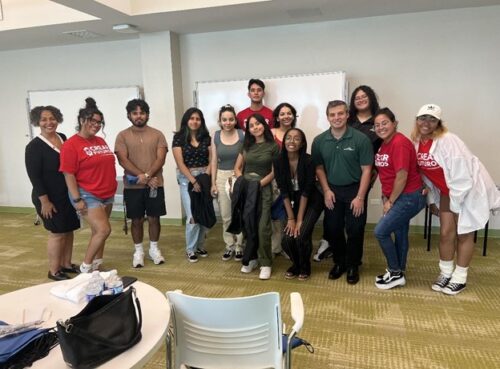“All audio-visual equipment in the college classrooms not just the NAB or the library is in working order and functioning,” according to Evan Kobolakis, assistant vice president of information technology services and chief information officer. But staff, faculty, and students disagree.
Professor Lee Blackstone, associate professor of sociology, said, “Not much has improved, that I can tell, from my last interview. I still experience problems getting the video projector in my room to ‘respond’ to the main console on occasion, so I’ve had to work around that (i.e., finding a DVD video I was going to show) or on YouTube instead and praying that the streaming speed won’t be too slow.”
A professor in the American Studies/Media and Communications Department, who wished to remain anonymous, twice had to move classrooms this semester, disrupting students, because the audio/visual equipment didn’t work. Such equipment is still broken in some NAB classrooms. Laura Chipley, assistant professor of media and communications and co-director of the Media Innovation Center, said that she has to bring her own adapter to the library to plug into the school issued computer via HDMI.
The malfunctioning of newly-installed printers –which department secretaries, in particular, say are not necessary and are difficult to use — persists with one SUNY OW employee recalling a recent incident in which a professor trying to print received only blurred pages. This printer is one of sixty-two multifunction printing devices on campus which, according to Kobolakis, “Reduce the cost of printing and copying and offer added functionality [such as] printing, copying and scanning.”
These devices were purchased for $168,000 under a five-year contract that covers toner, support and maintenance, Kobolakis said. This amount could have replaced AV equipment in at least ten classrooms at a cost of between $12,000 to $15,000 each. Furthermore, maverick drones were purchased, according to a source, but are not being used, and the use of the virtual reality lab installed in Room 106 of the NAB about three months ago is unclear. Kobolakis says that the school needs to replace its networking before much of the equipment can be replaced.
A source close to the IT department warned that if there were a network breakdown the school’s technology would be crippled for many days due in part to a lack of trained personnel. The main duties of a network administrator include being responsible for analysis, design, implementation, maintenance and support of SUNY OW’s infrastructure. But the senior system administrator left earlier this year. Then the person who followed as the network administrator left in October and his responsibilities fell on the remaining staff.
Employees are reportedly dissatisfied with the ITS management style. A source, who has since resigned, complained that the management lacks communication and has a demeaning approach to the staff. But Kobolakis states that the departure of employees is due a high turnaround in IT positions caused by highly competitive labor markets with a high demand for IT services.
“[SUNY OW] cannot compete compensation wise, with financial services firms, hospitals, or private colleges,” he said. “While our budget has increased and positions were added, the salary gap still remains deep and wide.”







